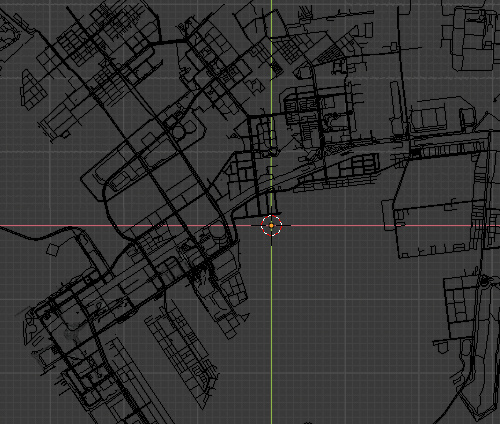ok, I got this
but how to use the profile?
it’s not to be used?
ok, I got this
but how to use the profile?
it’s not to be used?
thanks so much, now I get it 
the profiles are already set, one for street type…
thanks again 

Not an issue or anything very important, just experimenting with new things to do with the plugin.
I was thinking, is there a way to quickly put streetlights along the imported OSM streets? Currently I’m thinking of just using the curves to array and curve streetlight objects.
Thanks in advance.
UPDATE: That doesnt seem to be working ![]()
Hair particle system maybe?
Ohh you’re right. Didnt even think of that. I am still playing with the particle system settings, I can get them to spawn only at the edges of roads but I’ve had good results with pavements.
I don’t have any idea how to place the streetlights without writing a script.
If someone has any idea hot to solve that task, please share it here.
Maybe I’m underestimating this, but if you have a curve, then array + curve should be the way to go to place streetlights.
First, model one streetlight and offset it from center by half the width of the road. In edit mode, you can duplicate it and rotate the duplicate by 180 degrees, using the center as pivot point, so that you have a pair of lamps centered at 0,0 and separated each other by the width of the road.
In object mode:
Apply location/rotation/scale to the streetlights object.
Then select the streetlights object and add an array modifier, setting the distance between each pair of syreetlights to a reasonable value (25 meters? No idea) .
Then add a curve modifier, choosing the path that you want to use as the direction along which the streetlights will be laid.
Then, in the array modifier parameters, set the number of copies = fill the length of the same curve that you used in the curve modifier.
With little tweaking you should be ok.
That was my original idea but given the complexity of the curves (they aren’t one continuous curve per road and they also branch of into junctions/lane merges/etc) and the amount of them if it worked (let alone now that I’ll have to separate each piece of road so it works), it’s not really efficient
Oh, I get it. Array/curve has to be done one street at a time indeed.
To speed up the process a little, you may try duplicating all the road curves, join them to a single object, move to a different layer/group/collection just to keep everything clean, convert to mesh (alt C), enter edit mode, select all, press P to separate all loose parts. In that way you should get rid of most of the intersections, getting discreet paths of vetices that you can then reconvert to curves and use for the arrays.
Ahh didn’t think of that, very smart. Thanks!
Could unchecking the option Import as a single object help somehow to do the trick with array and curve modifiers? Every road or path of a road will be imported as a separate Blender object in that way.
A thing that would help, I think, could be the chance to assign to a group (speaking of Blender 2.79) all the objects of the same kind (in this case all the road paths) during the import process. In that way they would keep being separated objects, but they would be selectable with just a couple of clicks (select one, press shift G, 7). I think this wouldn’t hurt other functions. It could live along or replace the “import as a single object”. But I’m just thinking as I write, sorry for this 
Oh I’ll try this too when I get the time. After that I can assign the modifier to all the objects with Ctrl L
Ok, update on my tests:
Like you guys suggested, unchecking import as single object lets me work with the curves, however, is there any quick way of assigning objects to be arrayed on curves?
Currently I have ro manually copy, add modifiers and assign objects to 1000s of objects 
@John_514,
How about writing a short script (just a few lines of the code) that does the job?
It will probably have to come down to that. I best get reading.
A minor bug has been fixed in the blender-osm addon! Buildings with inner yards were affected. Use the link in your purchase confirmation e-mail to download the latest version any time.
Thank you for reporting the bugs and issues!
Hi vvoovv,
the plugin is awesome!
I’ve just downloaded the new version, and I’l try it in the next minutes 
I was wondering if is there a way to actually export height map of the mesh.
(I think it’s used for create the terrain, and maybe it’s saved somewhere here!)
I’d like to import the terrain and all the features outside of blender, in unreal engine.
I’ve already exported all the things I needed in fbx, and every things worked.
But it’d be better creating the terrain with unreal tools with an height map.
I’ve found how to export height map from a mesh (only in blender 2.79, not 2.80), but it’s very difficult to realign rendered height map with satellite images.
hope you can help 
thanks